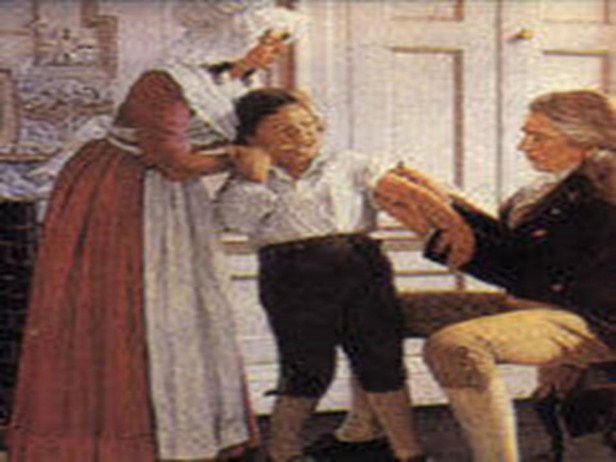 |
Dr. Zabdiel Boylston, 1676 or 1679 to 1766, apprenticed with his father, an
English surgeon named Thomas Boylston. He also studied under the Boston
physician Dr. Cutter, but never attending a formal medical school. Boylston
following Cotton Matther’s ideas on the value of variolation, seen here
variolating a small boy. Variolation actually gave a small, hopefully
non-fatal, dose of smallpox to ward off a fatal dose if acquired normally
during and epidemic. Boylston conducted this large scale human
experimentation in 1721 Boston, kept records, and proved that variolation
was much safer than taking a chance on acquiring smallpox during an
epidemic.
|
